Art & Exhibitions
Artists to Watch This Month: 10 Solo Gallery Exhibitions to See In New York Before the End of the Year
TM Davy, Diamond Stingily, Dan Lam, Mondongo, and more.
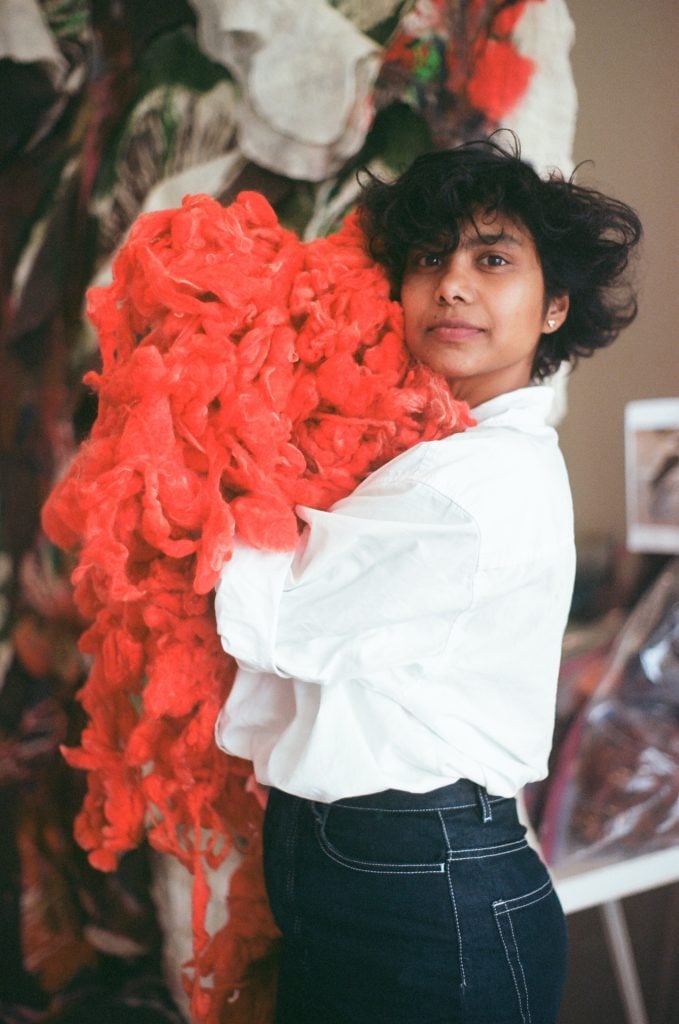
TM Davy, Diamond Stingily, Dan Lam, Mondongo, and more.

Annikka Olsen

Whether you are just returning to the city from Miami or simply wanting to see what’s on in the city before the holidays, we’ve rounded up 10 solo exhibitions that are not to be missed before the end of the year. And though the weather may have turned cold, the art scene is hot in New York City.
From an artist mining the “cat lady” cliché through ceramics to a fiber artist pushing the boundaries of their medium to a painter imagining a vivid fantasy world populated by fairies, these 10 artists span the dynamic landscape of art-making today.
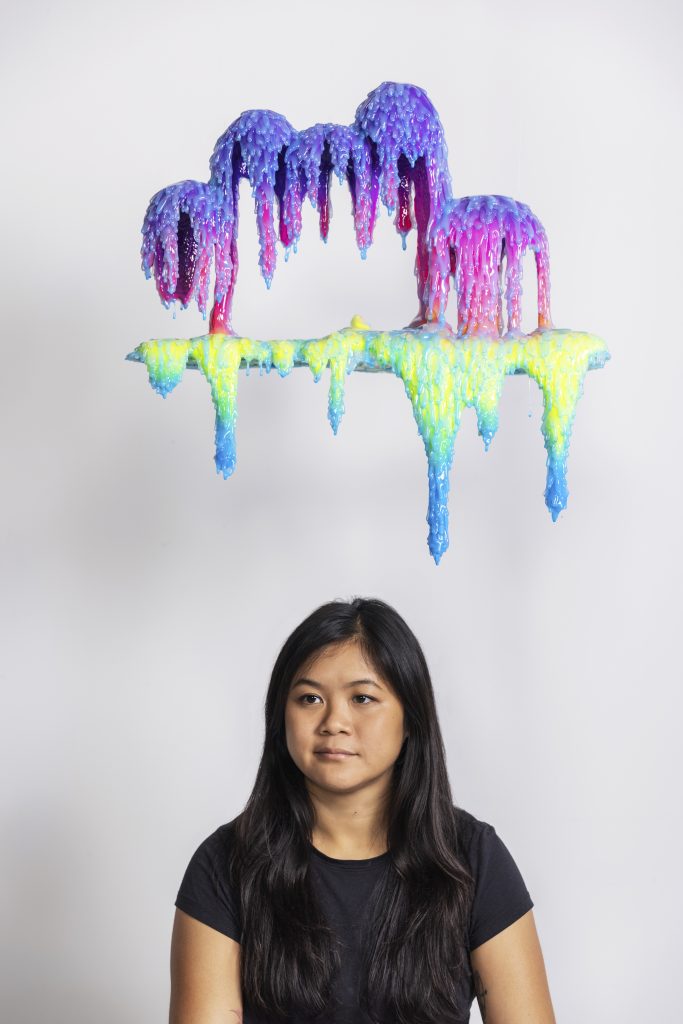
Dan Lam. Photo: Justin Clemons.
Hashimoto Contemporary will present a whopping 40 new works by Dan Lam in “Guttation” this month, filling the galleries with polychrome sculptures that appear to ooze and drip. Ranging from small- to large-scale, the collection of works illustrates the artist’s ongoing interrogation of shape, texture, and color, with the works recalling the way water is secreted by plants and fungi in nature. Walking the line between alluring and repulsive, and crafted out of materials like foams, resins, and polymers, the experimental and playful sculptures embody a visceral tactility and materiality.
The Texas-based artist has garnered more than half a million followers combined across TikTok and Instagram, as well as a staunch art world and celebrity collectorship—with Miley Cyrus, The Game, and the Tisch family being just a few of the big names to snap up her work.
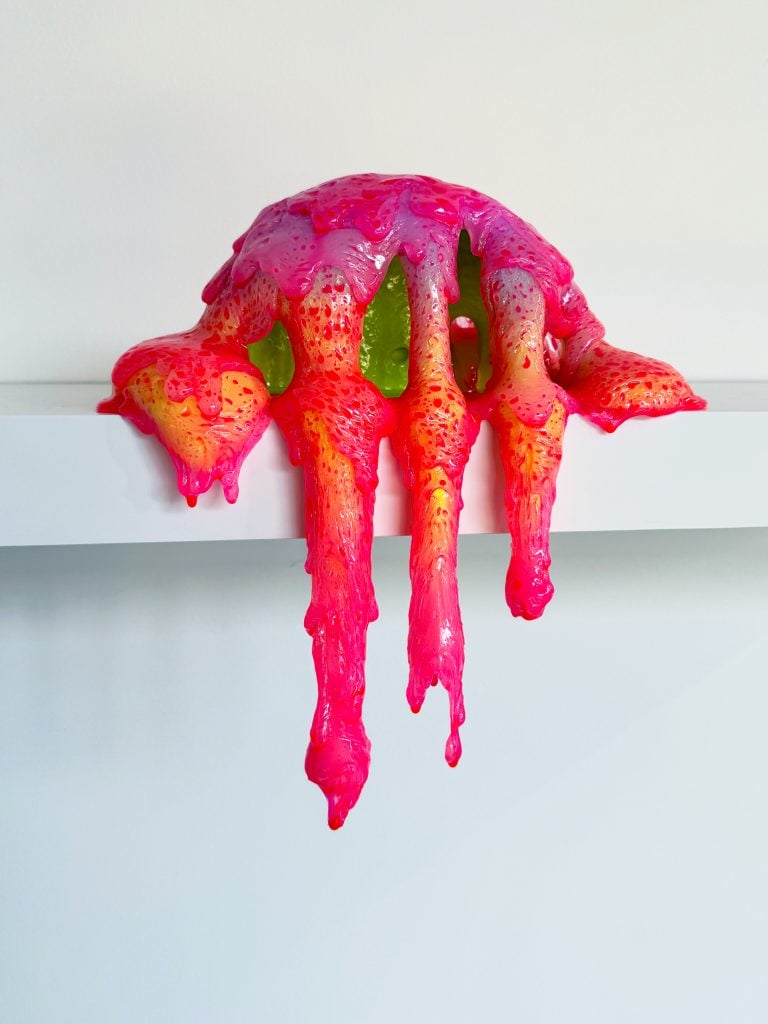
Dan Lam, Bark (2023). Courtesy of Dan Lam Studio.
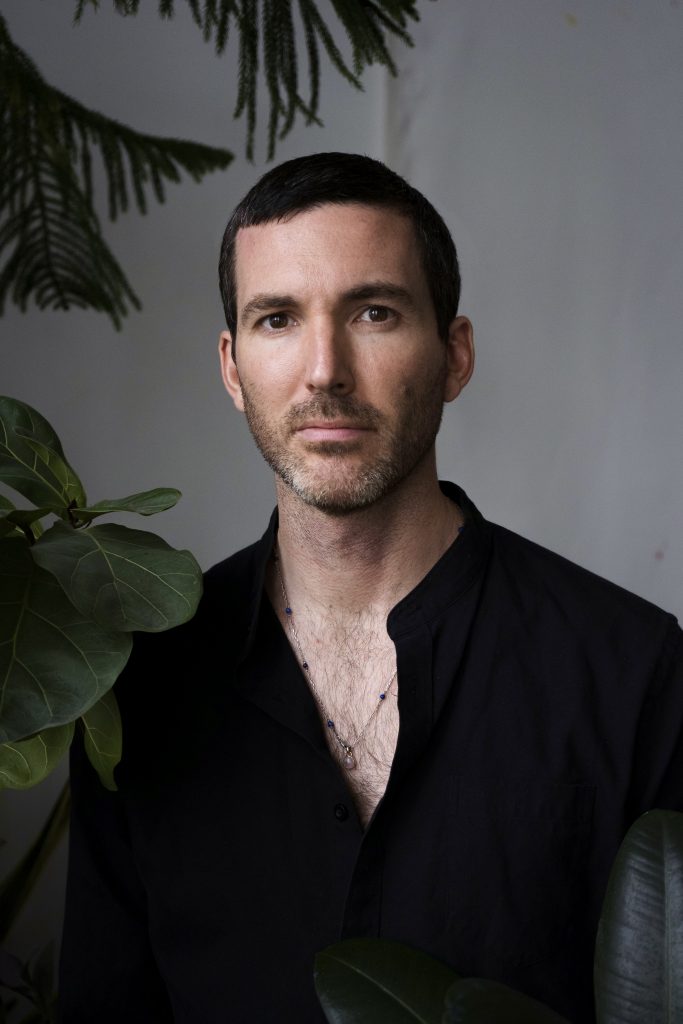
TM Davy. Courtesy of Company.
New York-based painter TM Davy, a graduate of and current teacher at the School of Visual Arts, is recognized for his vibrant figurative paintings and pastels that recall the tradition of magical realism. Frequently incorporating breath work, group singing, and meditation into his practice, he is able to “go there” and fully tap into his creative imagination, manifesting fantastical scenes and scenarios into each of his works.
His current solo exhibition at Company gallery, called “Fae,” features a collection of oil paintings (though most are on canvas, one is on a tambourine and another on a drum). These works bring viewers into his own faerie world, a fantasy realm of winged creatures, “tiny monsters,” and surreal, saturated colors. Inspired in part by media he consumed as a child, including the Dark Crystal (1982) and The Gremlins (1984), the narratives and stories that unfold from these images invite joyous reflection.
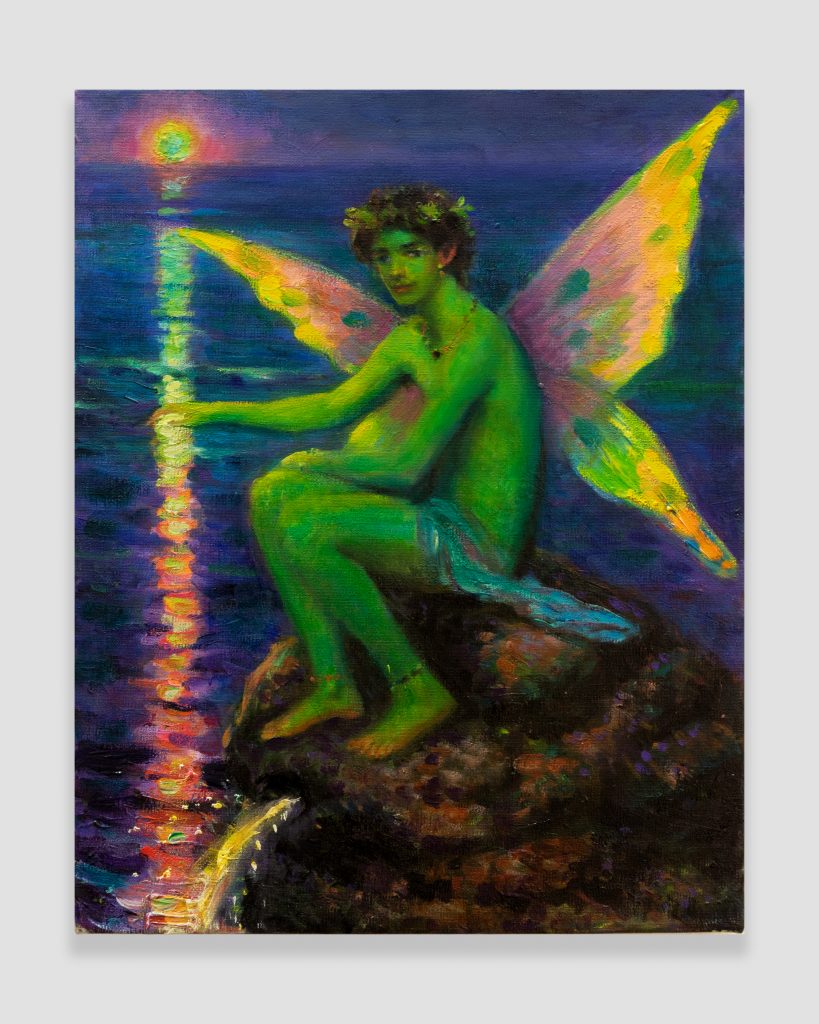
TM Davy, a sea of relief (2023). Courtesy of Company.
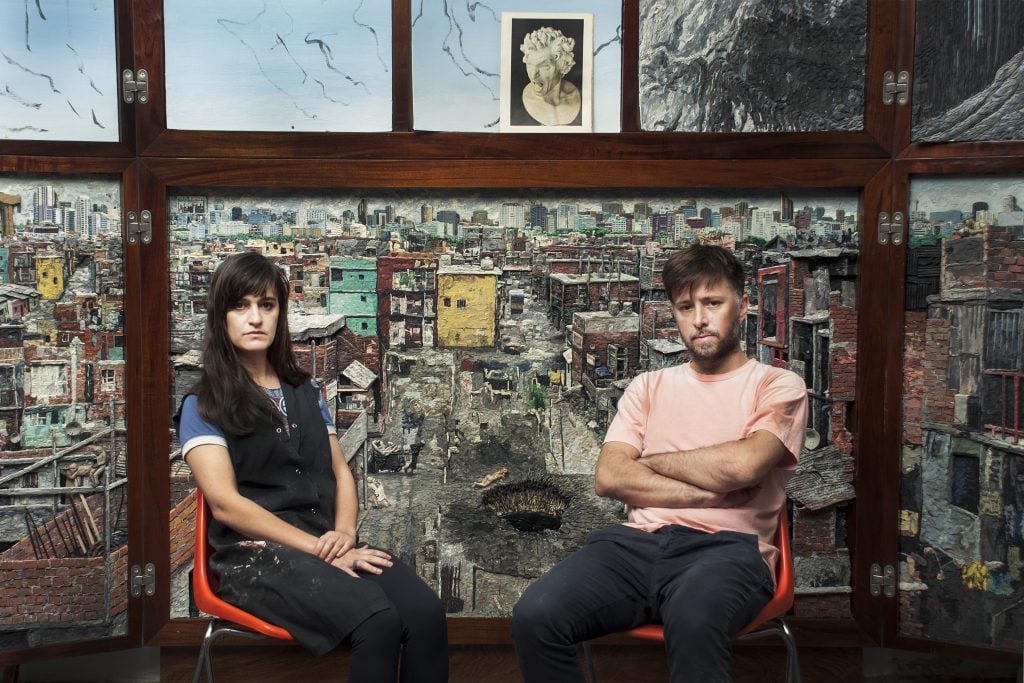
Mondongo artist collective, Juliana Laffitte and Manuel Mendanha. Courtesy of Barro.
Barro New York is showing “Welcome” by Argentine art collective Mondongo, presently made up of artists Juliana Laffitte and Manuel Mendanha. Working together since 1999, their work has been consistently provocative, frequently engaging with themes of power, work, sexuality, and more. Unconventional materials are also a signature, ranging from meat to wax, video to painting.
“Welcome” highlights three key works from 2023: Villa II is a tondo-shaped work in clay, depicting in meticulous detail lesser-known neighborhoods in Buenos Aires, Dharavi, and Rio de Janeiro. An audiovisual work embedded in plasticine bricks, The Wall, made in collaboration with filmmaker Albertina Carri, employs media materials related to the pandemic. Finally, “Cada cual tendrá derecho a su propio rectángulo” (Each will have the right to their own rectangle) is a series of paintings depicting partial visages of people from the artists’ circle, a play on the virtual meeting of people during quarantine.
Together, the exhibition examines the social, cultural, and political experiences of the past years, with an emphasis on the perspective of the Global South—and presents an intriguing look at the continually evolving state of the world today.
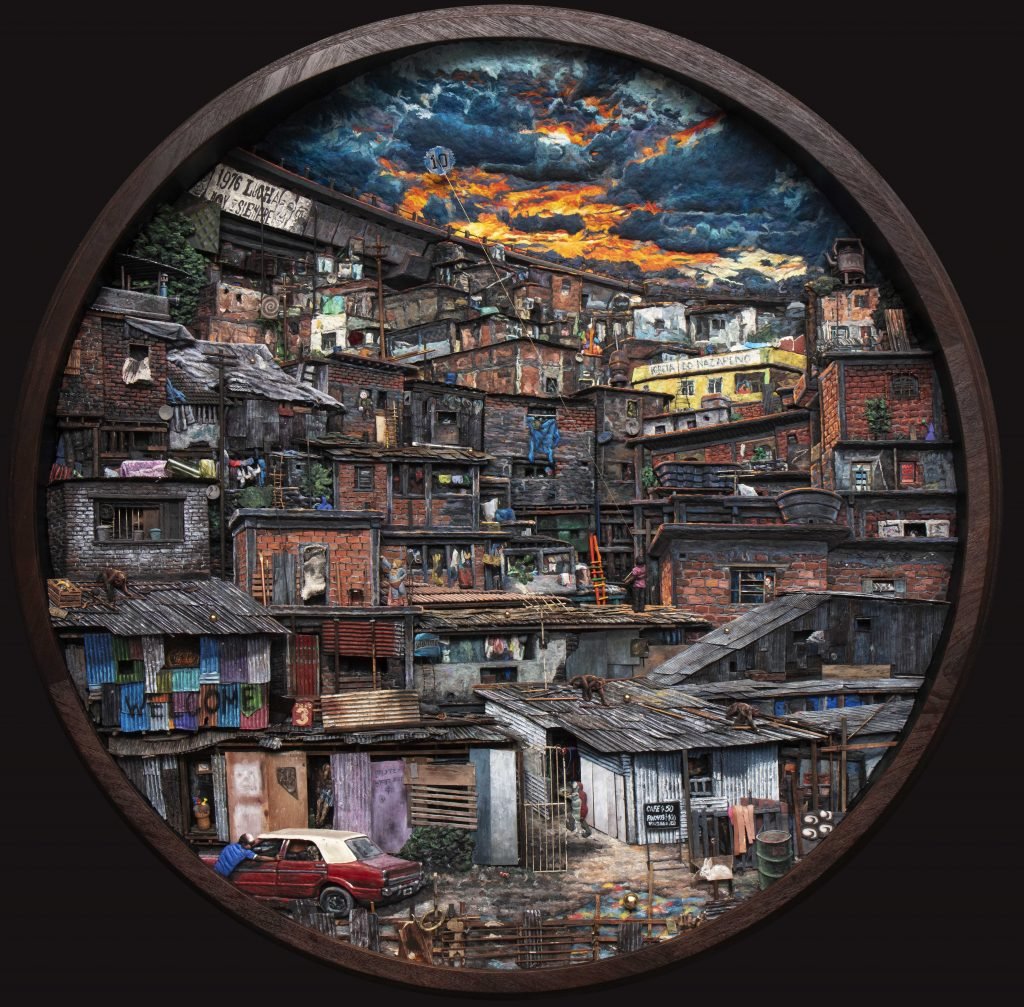
Mondongo, Villa II (2023). Courtesy of Barro.
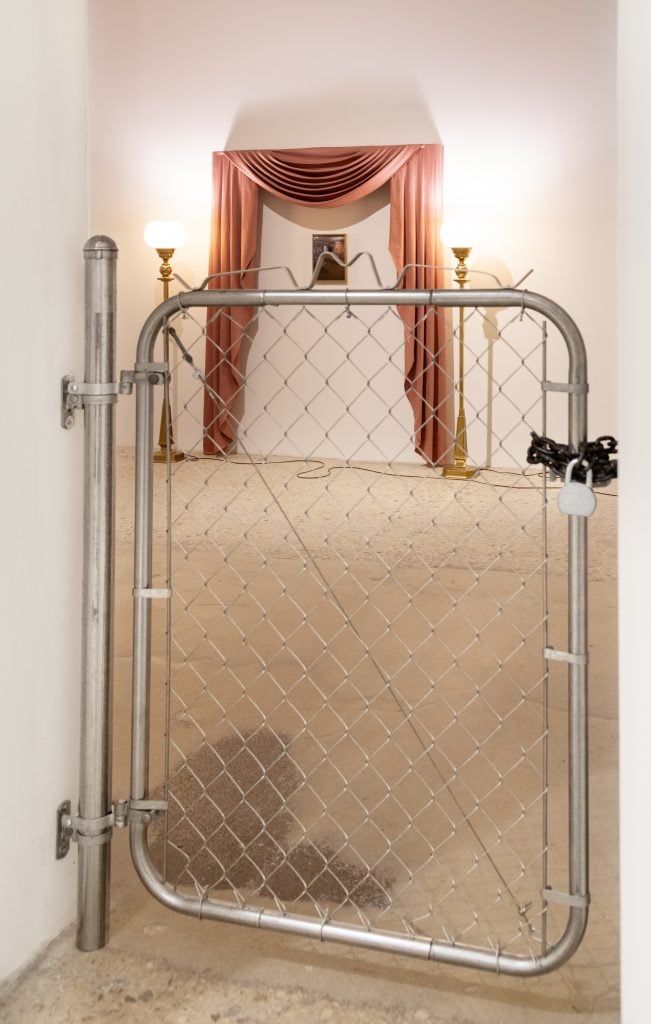
Diamond Stingily, Past (2023). Photo: Zeshan Ahmed. Courtesy of Greene Naftali.
In her highly anticipated solo show “Sand” at Greene Naftali, New York-based artist Diamond Stingily takes over the gallery space with a series of predominantly large-scale works that are based on the material of sand. The inclusion of bronze pieces modeled after various body parts, such as hands, arms, feet, knees, fingers, and ears, evokes an archeological dig or discovery. Recognized for her sparse and emotionally resonant work, the present exhibition highlights her ability to tap the visceral qualities of her chosen materials to engage with themes of place, memory, and experience.
A recent addition to the gallery’s roster, Stingily’s work has been acquired by public collections around the world, including the Museum of Modern Art, New York, Museum Ludwig, Cologne, and Institute of Contemporary Art, Miami.

Diamond Stingily, detail of Sand (2023). Photo: Zeshan Ahmed. Courtesy of Greene Naftali.
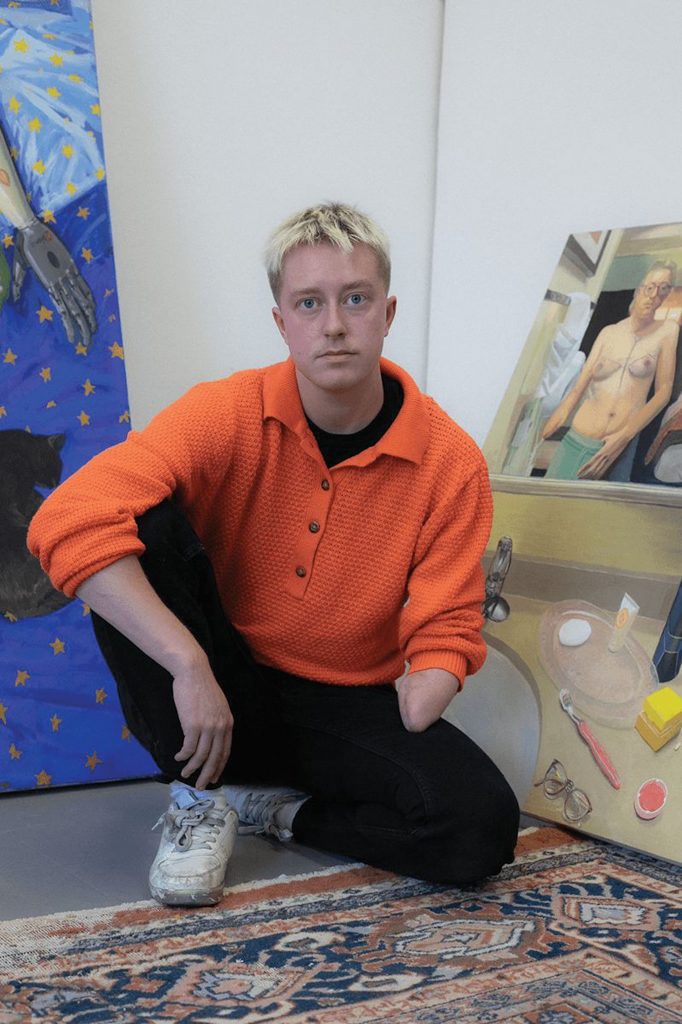
Linus Borgo. Courtesy of Yossi Milo.
For his debut solo exhibition in New York, and first with Yossi Milo, Linus Borgo interrogates “Monstrum,” the title of the show and Latin term for “monster.” In his otherworldly and often unsettling figurative paintings, Borgo explores the boundaries of the human body—how it is depicted and arranged, within the context of both reality and fantasy. Employing rich and lavish color palettes, each painting is a window into another world; whether incorporating urban landscapes, secluded forest glens, or residential bathrooms, Borgo maintains an incredible command of atmosphere.
“Monstrum” also includes the first exhibition of the artist’s sculptures in bronze, which feature the artist himself as imaginary creatures such as an angel or merman—the latter of which is a motif he has continually returned to in his practice. Tapping elements of Surrealism and mythology, as well as pervasive and personal perceptions of the human body, Borgo’s captivating, even sublime vignettes offer new approaches to ideas around bodily aesthetics, transformation, trauma, and transition.
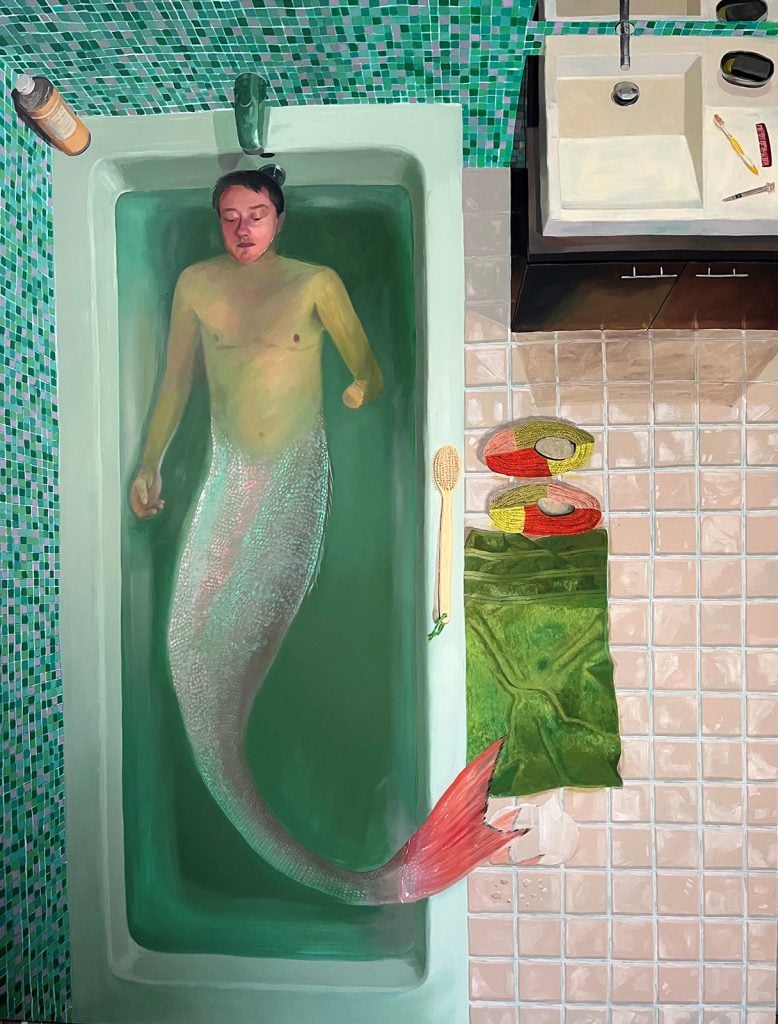
Linus Borgo, Death Is Like Taking Off a Tight Shoe (2023). Courtesy of Yossi Milo.
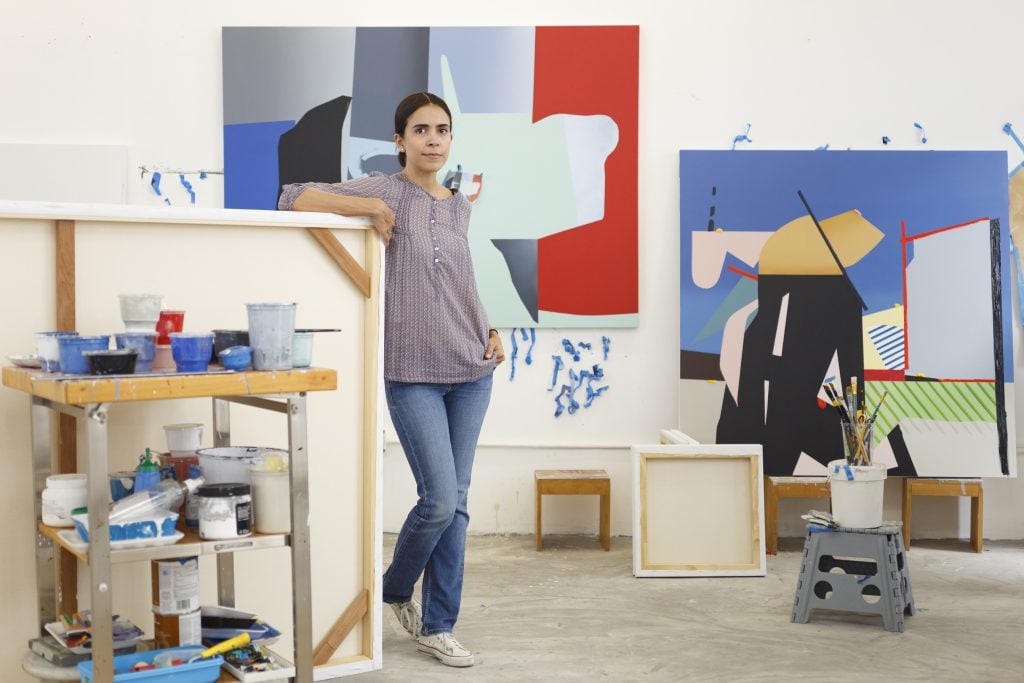
Ana Elena Garuz. Courtesy of Proxyco Gallery.
Mining a massive personal archive of magazine cutouts, Ana Elena Garuz draws inspiration from the glossy scraps and pages, composing paintings that vacillate between abstraction and hyperrealism. An apparent fold or tear seen along the edge of her fields of color, or swaths of white that could be interpreted as a highlight, Garuz’s work invites prolonged looking, examining the boundary between what the familiar and the foreign.
In her solo show with Proxyco Gallery, “Fragments of Belief and Disbelief,” Garuz’s recent body of work on view brings to mind historical modes of abstraction, yet her unique artistic sensibility and source materials make each painting decidedly contemporary. Together, the artist’s practice can be understood as a poetic and ongoing dialogue with line and color.
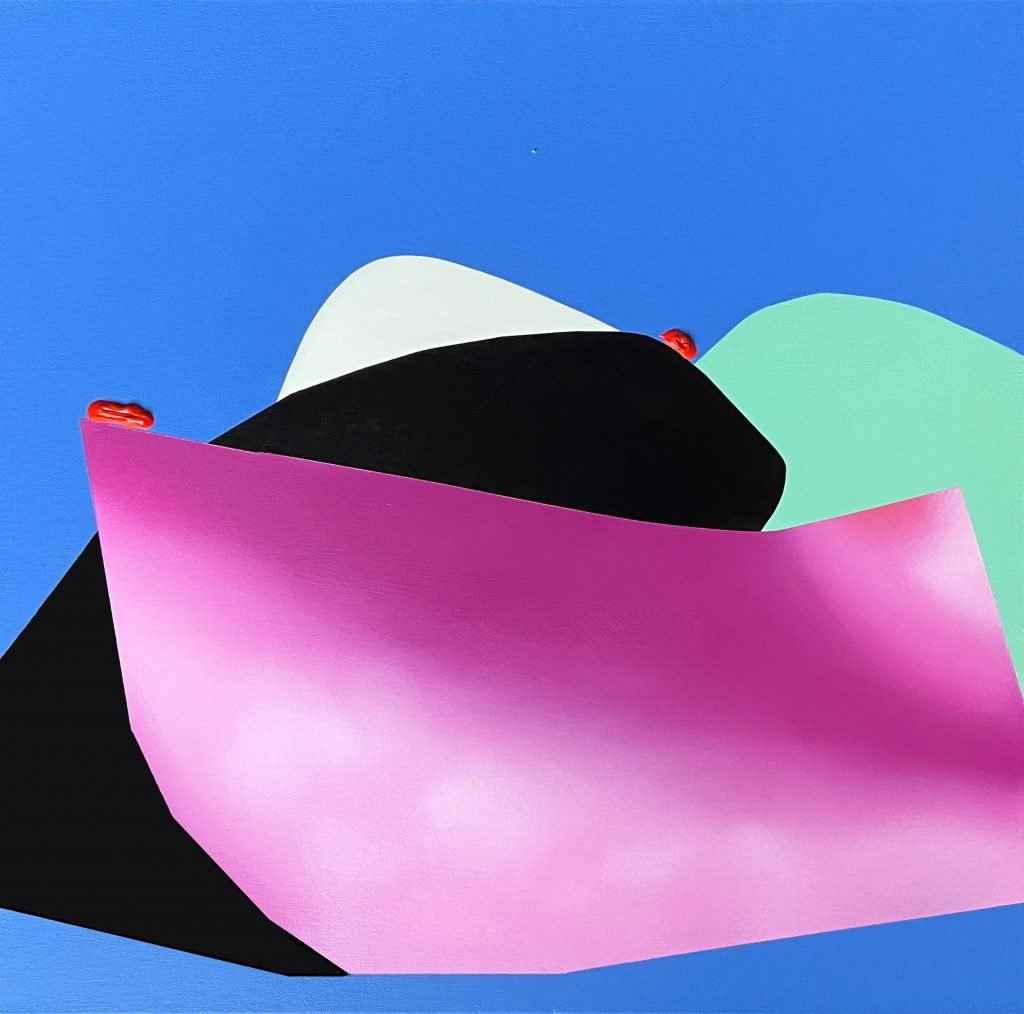
Ana Elena Garuz, Untitled (with pink form) (2023). Courtesy of Proxyco Gallery.
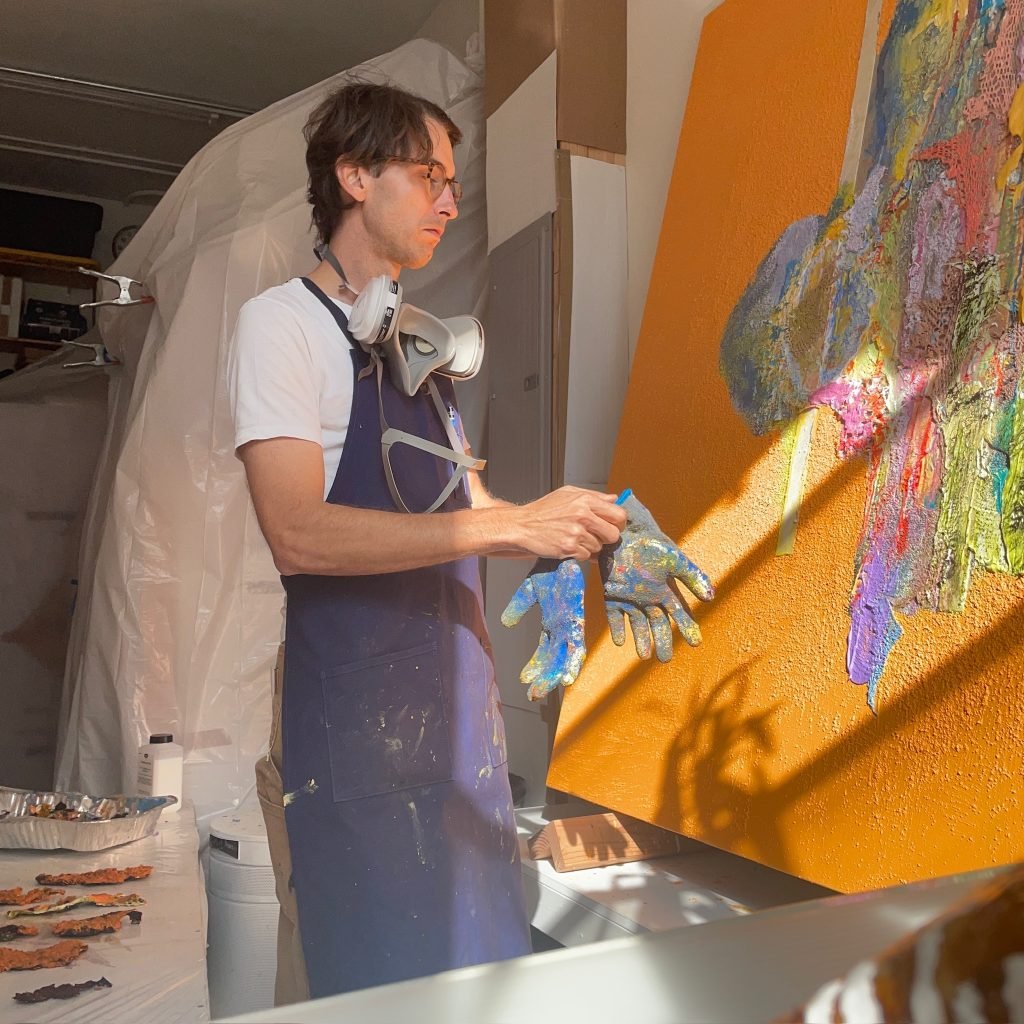
Erik Lindman. Courtesy of the artist and Peter Blum Gallery.
Marking the first time that the breadth of artist Erik Lindman’s practice will be on view simultaneously, Peter Blum Gallery is staging “Helian,” featuring the artist’s paintings and sculptures, as well as works on paper. A native New Yorker, Lindman’s work relays his fascination with both material and composition across genre.
Informed by found materials such as steel fragments or heavyweight fabric webbing, Lindman constructs his works in such a way that they may be read holistically rather than by their elements or parts. In his paintings, a central form, evoking a bird or a humanoid form, frequently emerges from a monochromatic field. Lindman builds up the area with paint and mixed-in media to give it texture and “topography,” creating a ground that dialogues with the ambiguous figure. Lindman’s sculptures similarly explore material, but with the advantage of having a third dimension, allowing for experiments with perspective. Ultimately, “Helian” offers a new take on abstraction and its possibilities today.
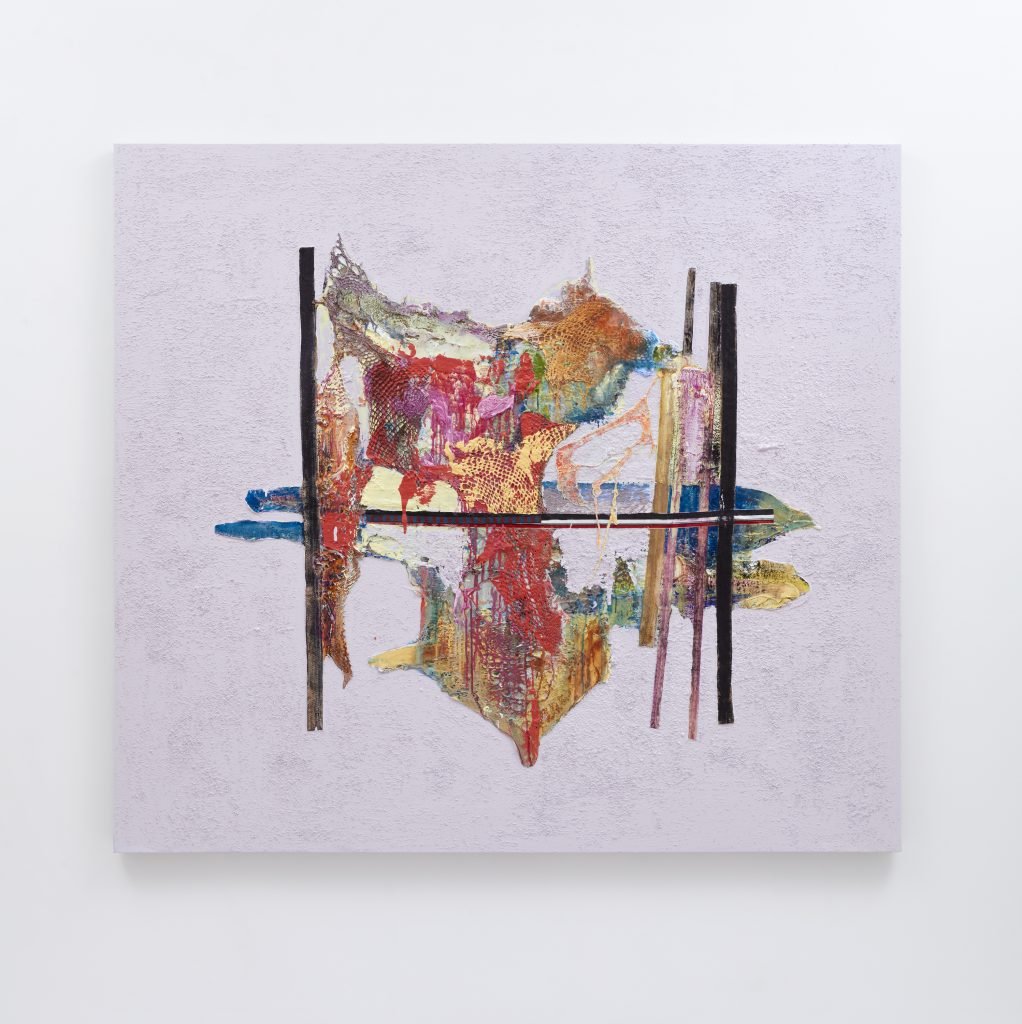
Erik Lindman, Helian I (2023). Courtesy of the artist and Peter Blum Gallery.
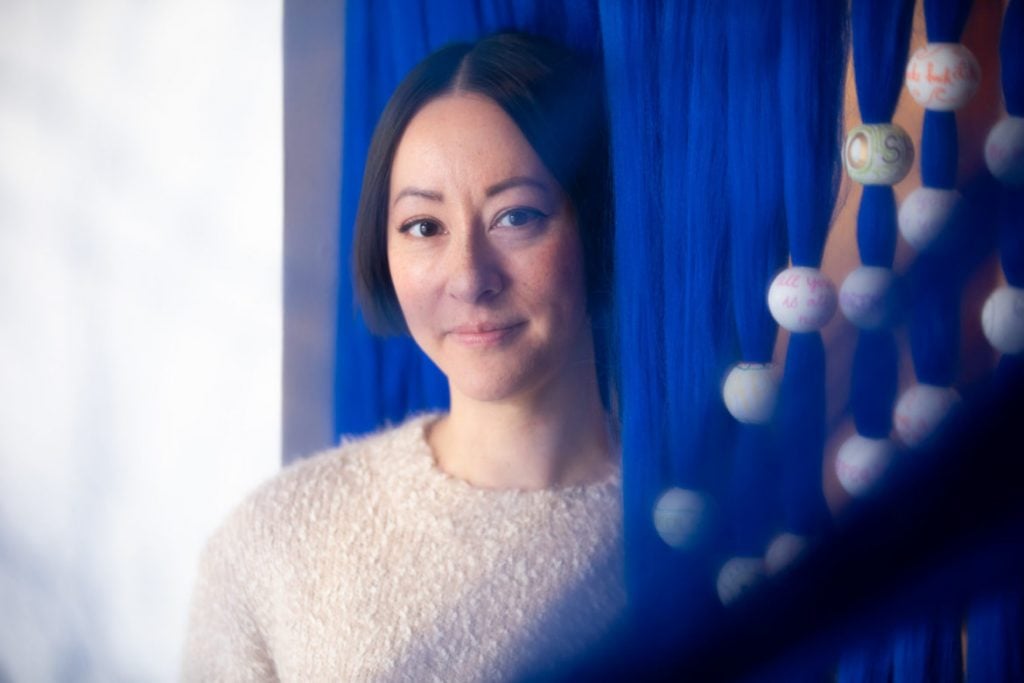
Jennifer Ling Datchuk. Photo: Scott Ball. Courtesy of Ruis-Healy Art.
The “cat lady” trope has been widely used to dismiss women for decades, but in Jennifer Ling Datchuk’s solo exhibition with Ruiz-Healy Art, “Karma is a Cat,” the artist reexamines and reclaims this label. Self-described as an “overeducated, cat-loving, elder millennial in a committed and loving relationship with a man and a cat” (a response to Congressman Matt Gaetz’s 2022 tweet criticizing women rallying against overturning Roe v. Wade), Datchuk presents a collection of object-based works that reimagine assumptions about the feminine.
Frequently using materials like porcelain and textiles, often associated with “women’s work,” Datchuk’s show is at once playful and deeply complex, delving into social, cultural, and political assumptions on identity, womanhood, and intersectionality.
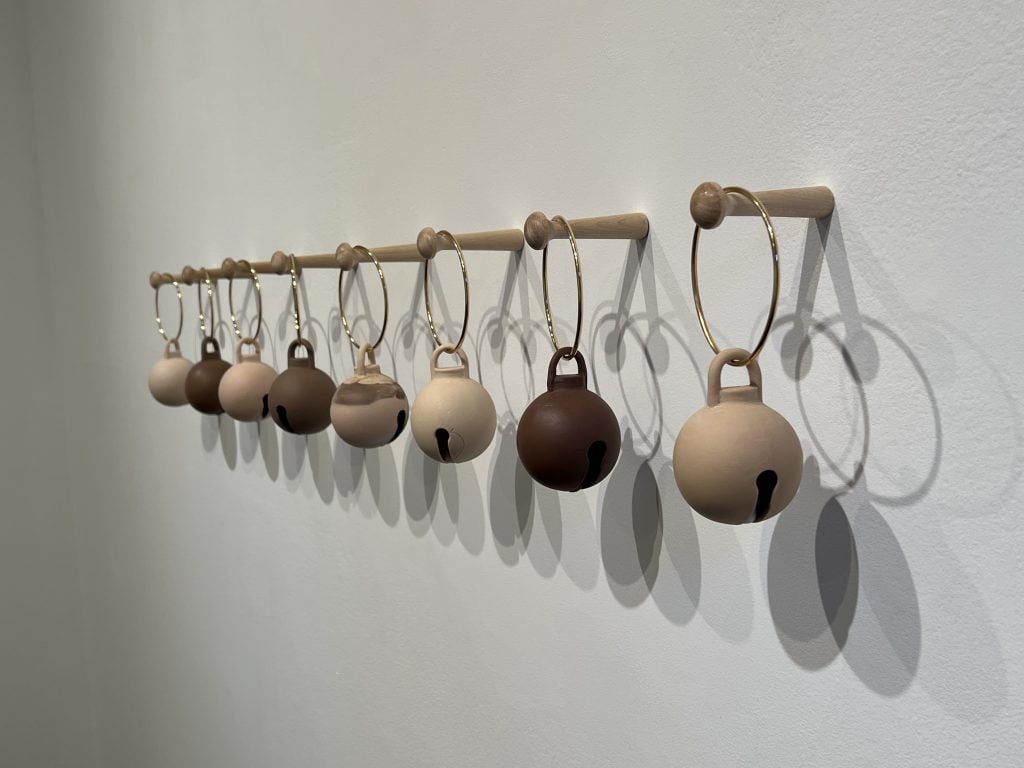
Jennifer Ling Datchuk, Hear Us Coming (2023). Courtesy of Ruiz-Healy Art.
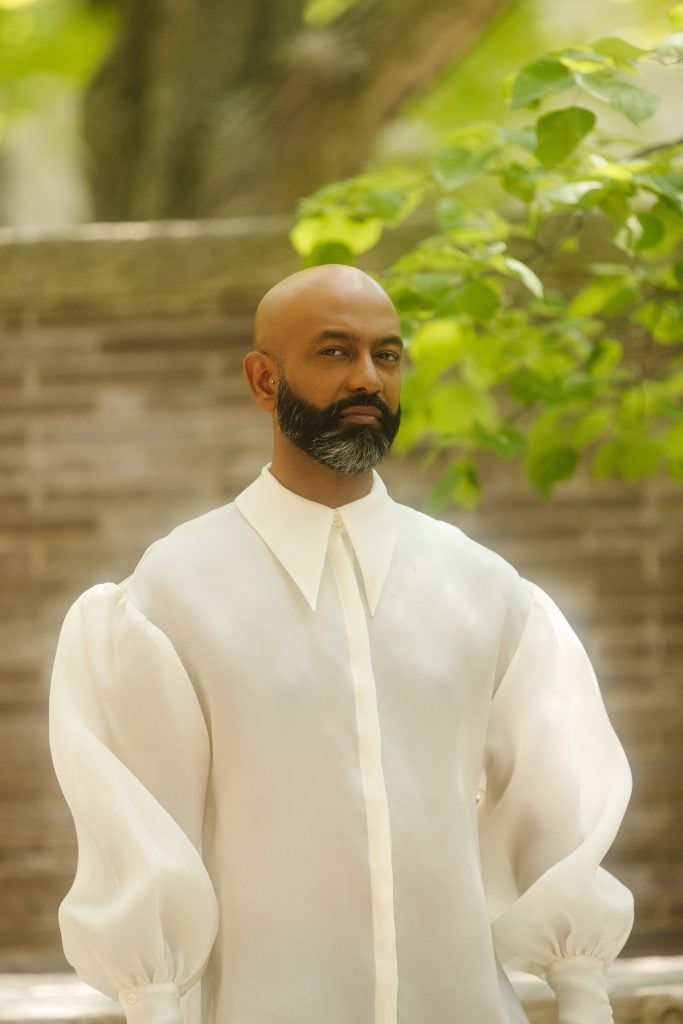
Brendan Fernandes. Photo: Michael Salisbury. Courtesy of the artist and Susan Inglett Gallery.
Brendan Fernandes is the subject of his first solo exhibition with Susan Inglett Gallery, “Within Reach,” comprised of a series of sculptures as well as a program of activations performed by contemporary dancers. Fernandes’s sculptures are inspired by West African headrests, functionally made to preserve complex hairstyles while the wearer sleeps, but with deep-rooted cultural and spiritual importance, with the belief that these objects can promote dreams or prevent nightmares.
Meanwhile, the artist’s choreography juxtaposed with the artworks results in a hybrid dialogue between African and Western artistic practices and presents a complex critique of colonialism and insight into the Fernandes’s own personal identity. (The next performance is scheduled for Saturday, January 20, 2024.)
Also on view in the exhibition are works from the “As One” photography project undertaken by Fernandes in 2015. Originally initiated as part of a commission for the Seattle Art Museum, and later expanded upon using the Cravens Collection at the UB Art Galleries, within the context of the performed dances, the work further interrogates the colonial legacies of the West.
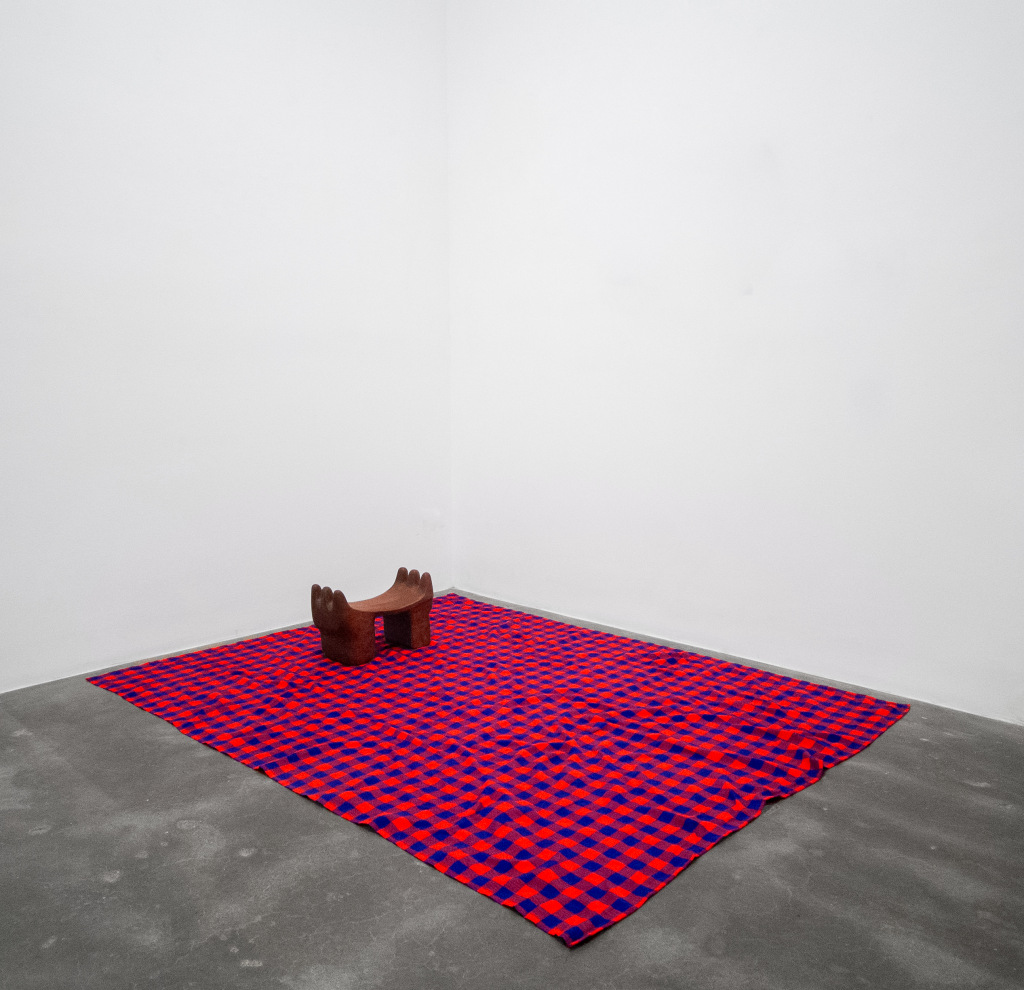
Brendan Fernandes, In Being III (2023). Courtesy of the artist and Susan Inglett Gallery.
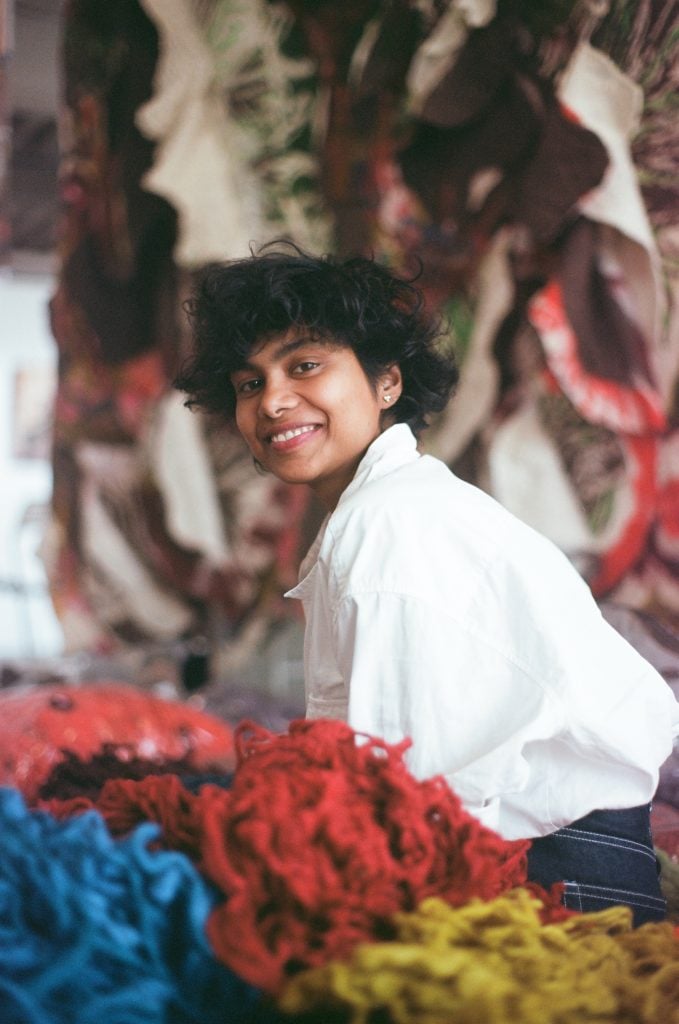
Sagarika Sundaram. Photo: Anita Goes. Courtesy of the artist and Palo Gallery.
Sagarika Sundaram’s debut New York solo exhibition “Source” at Palo Gallery offers some immense works made of felt. Featuring both wall-mounted and free-standing pieces, the selection of works are a testament to Sundaram’s ongoing exploration of and experimentation with textiles. Using raw fibers and hand-dying techniques, the artist is able to achieve a painterly quality in her compositions as well as to invoke sculptural traditions, since even the wall-mounted works spill into three-dimensional space. With many pieces seemingly defying physics, Sundaram is an artist to watch in her quest to forward the boundaries of textile and fiber art-making.
Coinciding with the exhibition is the production of a fully illustrated catalogue, edited by curator Andrew Gardner and anthropologist and curator Vyjayanthi Rao, featuring essays by each as well as a dialogue between Sundaram and Bahauddin Dagar, an acclaimed Indian classical performer of the rudra veena.
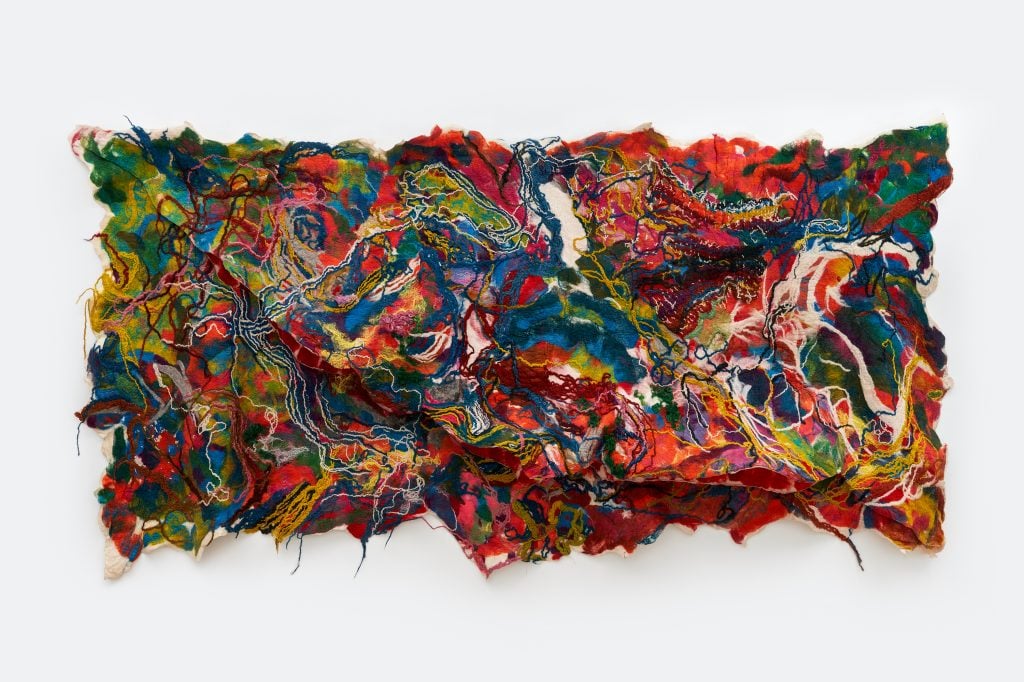
Sagarika Sundaram, Atlas (2023). Photo: Kunning Huang. Courtesy of Palo Gallery.